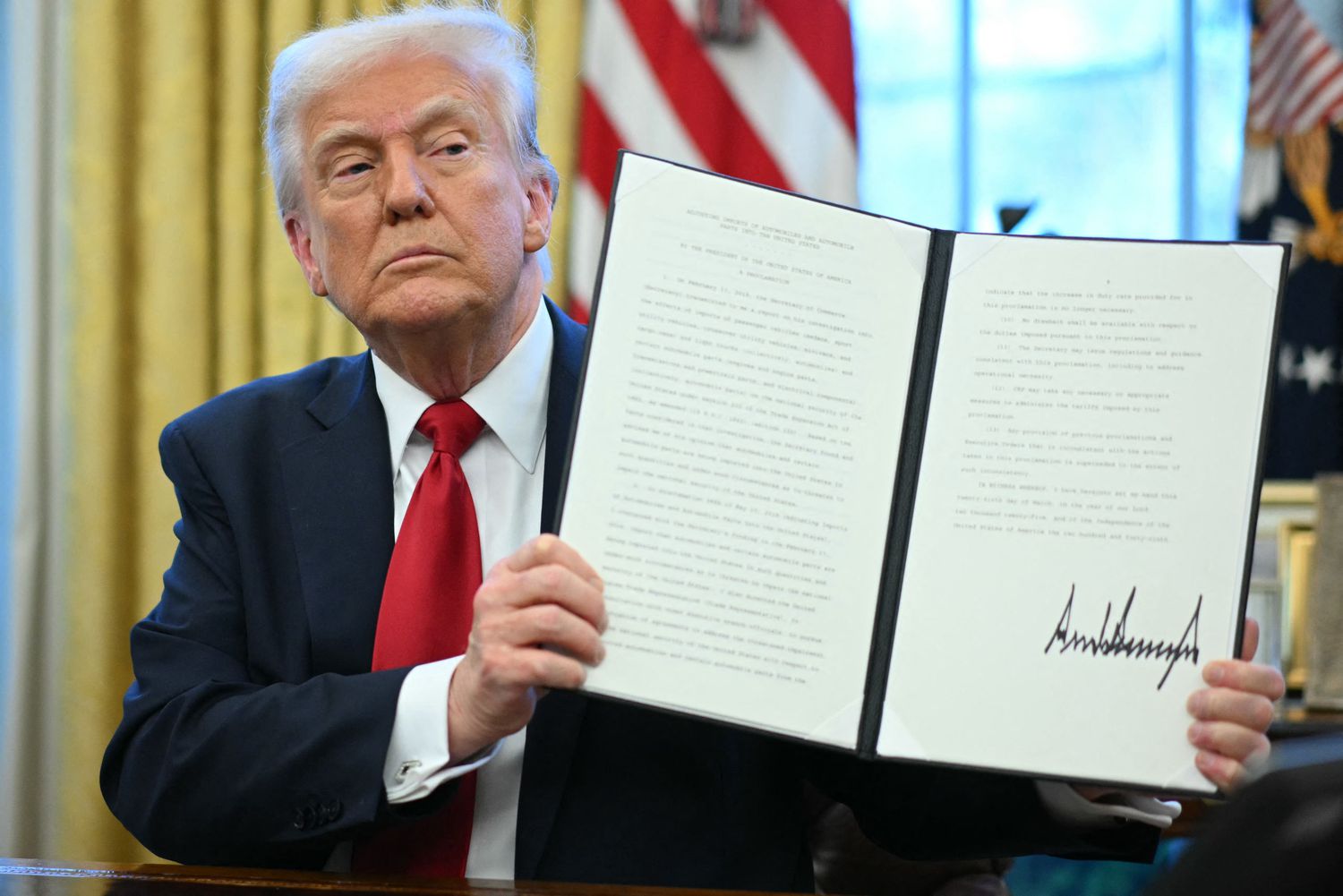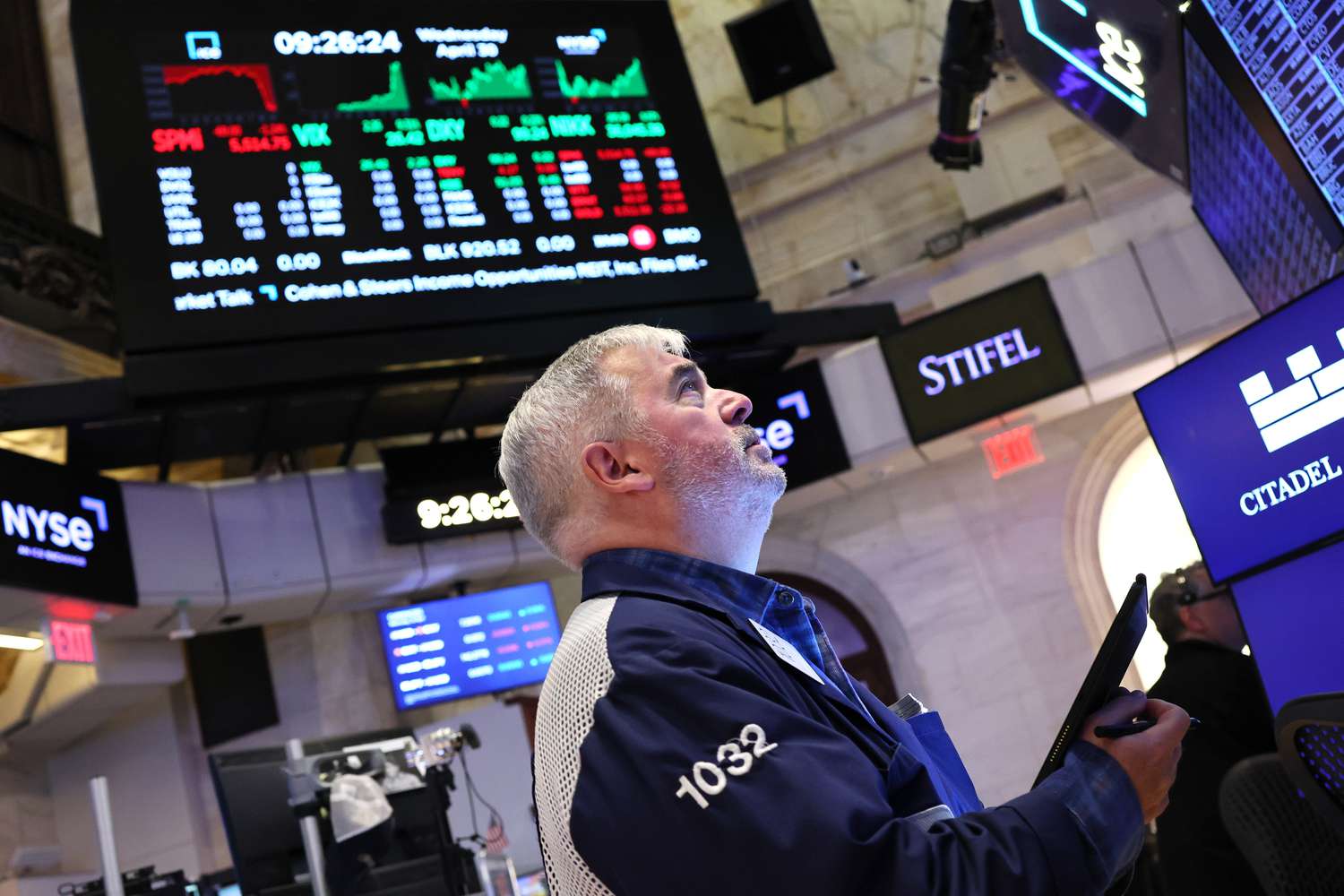Checking in with our resident bear … why this rally is running out of steam … will Wednesday bring a rate cut? … another week of no trade deals … when will Wall Street demand more?
If you’re a trader, it’s time to consider taking some profits off the table…but then also start looking for the next opportunity to buy into a rebound.
That’s the broad takeaway from master trader Jeff Clark.
As we’ve been profiling here in the Digest, Jeff believes we’ve begun a bear market that still has a long way to fall.
He views the recent market strength as a bear-market rally that’s nearing its top. That means shorter-term traders should consider taking profits and/or getting short in preparation for the next leg lower.
To unpack this, let’s rewind to Jeff’s prediction from nearly a month ago
First, for newer Digest readers, Jeff is a legendary trader with more than four decades of experience. In his service, Jeff Clark Trader, he uses a suite of indicators and charting techniques to profitably trade the markets regardless of direction – up, down, or sideways.
Today, Jeff believes we’ve entered a bear market and have already hit the high of the year. In early April, he outlined what he sees coming:
Ultimately, I think where we’re headed, if this is truly a bear market as I think it is, is the same level as late-2023 when we were somewhere around the 4,150 level or 4,100 level (for the S&P).
I think we’re going to have a generational buying opportunity this year, not unlike what we saw back in 2008, where stocks traded just so unbelievably low that you had some incredible opportunities to buy.
That 4,100 to 4,150 level represents a drop of roughly 27% based on where the S&P trades as of this Monday morning.
Jeff plans to trade the drawdown in two ways:
- Ride oversold rips higher (even as the broader trend is “down”),
- Use profits from those trades to take advantage of that “generational buying opportunity” when the dust settles.
Here he is with the timing of that eventual buy-and-hold moment:
The real opportunity to buy I think is probably going to wind up sometime in October, November.
We can trade between now and then, but…like oftentimes happens, you get that final washout in October or November, and that’ll give us a really good opportunity to jump in and put some capital to work at super depressed prices.
Why Jeff believes our latest rally is running out of steam
Toward the end of April, as the market surged, I asked Jeff if his bearish forecast had changed amidst all the buying.
It hadn’t.
He was sticking by his forecast for a relief rally that, ultimately, would fizzle and turn into a new leg lower. Sell the dip, buy the ensuing rip. Rinse and repeat.
Here was his prediction at that time:
Stocks are likely headed higher in the short term…
The closer the S&P gets to 5,750 the better the odds for adding short exposure.
On Friday, the S&P briefly hit 5,700, not far from Jeff’s “add short exposure” line in the sand.
Let’s jump to his update last Thursday:
Look at this chart of the S&P…

Source: StockCharts.com
Look at the action in early April and notice how the momentum indicators at the bottom of the chart do NOT show any positive divergence. The MACD, RSI, and CCI indicators made lower lows right along with the S&P.
I stated at the time conditions were oversold enough to justify a bounce, but the purpose of that bounce would be to pull the momentum indicators far enough off the bottom that they’d create positive divergence on the next decline in the S&P.
This current bounce has done its job.
The S&P 500 is challenging its 50 and 200-day moving averages as resistance. The momentum indicators are back into neutral territory. And they’re high enough now to not make new lows if the S&P dips back below its early-April low.
Ultimately, this should provide a good setup for a summertime rally. But first, we should be prepared for a retest of the early-April low.
This led Jeff to add some short exposure last week, noting “the closer the S&P gets to its 200-day MA at 5,750, the better the risk/reward setup for the trade.”
Did Friday’s rally derail Jeff’s bearish forecast?
Stocks posted strong gains on Friday after a solid jobs report as well as positive news on the trade war front related to China.
Here’s Jeff’s take from Friday afternoon:
Overbought conditions are getting more overbought.
But just as it was proven to be a bad idea to sell into oversold conditions in early April – when the market kept falling everyday – it should also prove to be a bad idea to buy into the market after nine straight up days.
We are witnessing a buying panic.
Jeff recommends traders watch the VIX and VIX options for the early warnings sign of when bullish momentum turns bearish.
If the VIX starts to rally while stocks continue climbing, that’s a red flag. And if VIX calls begin trading at a large premium to VIX puts, Jeff says a reversal could be fast approaching.
To be clear, Jeff isn’t calling for a knife-edge freefall. He envisions more of a stairstep lower, with rallies that he plans to trade.
On that note, here’s his latest update from this morning:
At a minimum, we’re overdue for at least a brief pullback. At worst, we could see a retest of last month’s lows…
I will be looking to add long exposure into weakness. But I’m not in a hurry to do so. We likely have several days of falling stock prices in front of us…
Nobody is expecting the Fed to do anything. But the market is likely to be on edge between now and after Wednesday’s announcement.
Speaking of the Fed…
The Federal Reserve concludes its May FOMC meeting this Wednesday. In recent weeks, there’s been plenty of speculation about the Fed’s rate cut policy and/or signaling to the market.
On one hand, there’s the group that believes the Fed should cut interest rates. Legendary investor Louis Navellier falls into this camp. Here he is from last week:
We’re going to get a Fed rate cut in May.
If we don’t, [the Fed members are] clinically insane – they’re not looking at the data. And the cause for them to cut will get louder and louder cause market rates will have collapsed.
On the other hand, traders put majority odds on the likelihood that the Fed will maintain the current target rate on Wednesday. Jeff is of this opinion.
The CME Group’s FedWatch Tool shows that traders are putting a 99.0% probability on the Fed holding rates steady on Wednesday.
Here’s Jeff, in agreement:
A stronger than expected jobs report [on Friday] has prompted a rally…
Of course, there’s now zero chance of a rate cut next week when the FOMC meets. And the odds of a June cut are likely to be pared back following this jobs report.
To Jeff’s point about June, last Thursday, traders put a 55% probability on a quarter-point cut in June. But following the strong payrolls report on Friday, those odds have dropped to 30%.
Keep in mind, one month ago, the probability that we’d have at least one rate-cut in June was 94.5%. The odds of two rate cuts stood at 30.6%.
So, why isn’t the market collapsing as the odds of rate cuts fall?
After all, in recent months, much of the bull case anchored on lower rates helping remove pressure on stock valuations and reduce economic pressure on Main Street Americans.
Here’s Jeff’s explanation:
The market no longer seems to be moving on rate-cut expectations.
Instead, investors are breathing a sigh of relief that recession clouds are parting a bit.
Will trade war progress help the U.S. skirt a recession?
Yesterday a friend who’s a guitar collector told me about a conversation he had with the owner of a small guitar shop. Tariffs on China are about to raise the wholesale cost of one of his most popular guitar models from about $1,000 to $2,400.
As a result, the manufacturer is considering no longer selling into the U.S. for the time being. The small-business owner is worried about the impact on his business.
Are we on the cusp of a wave of similar stories if signed trade deals don’t begin to materialize soon?
Last Tuesday, I scrambled to rewrite the introduction of our Digest before our publishing deadline due to a late-breaking headline that Commerce Secretary Howard Lutnick had reached a trade agreement with an unspecified country.
Here was Lutnick:
I have a deal done, done, done, done, but I need to wait for their prime minister and their parliament to give its approval, which I expect shortly.
Since then, it’s been crickets.
This has me wondering about Lutnick’s definitions of “done” and “shortly.”
First, if a prime minister and parliament have yet to approve a trade deal (meaning the trade negotiator speaking with Lutnick didn’t have ultimate, final approval), then “done” was the wrong word choice.
But let’s say I’m nitpicking, and it truly was a matter of “dotting I’s” and “crossing T’s.” Well, that’s where “shortly” would have come into play, proving me wrong within a day or two after such an announcement.
But here we are, nearly a week later and there’s been no follow-through.
Now, speculation is that Lutnick was referencing India. And there is positive news this morning on the trade front with India. From Bloomberg:
India has proposed zero tariffs on steel, auto components and pharmaceuticals on a reciprocal basis up to a certain quantity of imports in its trade negotiations with the US, people familiar with the matter said…
The offer was made by Indian trade officials visiting Washington late last month to expedite negotiations on a bilateral trade deal expected by fall this year, the people said.
The two nations are prioritizing certain sectors to strike an early trade deal before the end of the 90-day pause on US President Donald Trump’s tit-for-tat tariffs, the people said.
But notice the timing – “the offer was made by Indian trade officials visiting Washington late last month.”
If Lutnick was referencing India as is speculated, it would make sense. The timing of his enthusiasm last week matches the timing of this Indian trade proposal.
But even if that’s the case, we’re still back to no signed deal, even though it was allegedly “done, done, done, done.”
If we look beyond headlines touting “progress,” where are we with trade deals?
This is an important question since much of the market’s blistering rally in recent weeks has been predicated on the notion that deals are imminent.
Here’s Politico from week:
White House officials have boasted that more than a dozen countries have put offers “on the table” to avoid the biting tariffs scheduled to kick in in just over two months — a sign President Donald Trump’s risky trade gambit is paying off.
But the documents other countries have submitted to the White House are far from final offers, according to a dozen foreign diplomats and three officials, granted anonymity to discuss the sensitive conversations.
Rather, they are preliminary outlines of what their governments are willing to discuss in the trade talks, something the Trump administration has made a prerequisite for pursuing any further negotiations.
Some trading partners are balking at proposing even an outline of their terms before they get more guidance from the U.S. side on what Trump is seeking from the talks.
“They are hesitant to negotiate against themselves,” said one industry official, briefed on plans by foreign countries.
In our 4/25 Digest, I wrote:
The cannonball back into the market represents a wager from investors. They’re putting their chips on one specific outcome…
Trade deals will be announced soon, and they’ll be economically beneficial – or at a minimum, not overly destructive.
As with all wagers, there’s risk. In this case, there are two potential tripwires:
- The deals don’t actually materialize
- The deals that do materialize disappoint Wall Street
Lutnick’s pump-fake and Politico’s article aren’t making me feel any better about the bet that investors are making today.
Now, yesterday, President Trump said we could see finished deals this week.
I’d be thrilled to have to frantically rewrite a Digest just before we publish due to a late-breaking headline about an actual trade deal. But so far, all we have are headlines touting “progress.”
At some point, that won’t be enough for Wall Street. And what will happen then?
Well, that brings us full circle to Jeff Clark, his bear market prediction, and the recommendation to take some profits off the table.
Have a good evening,
Jeff Remsburg






















